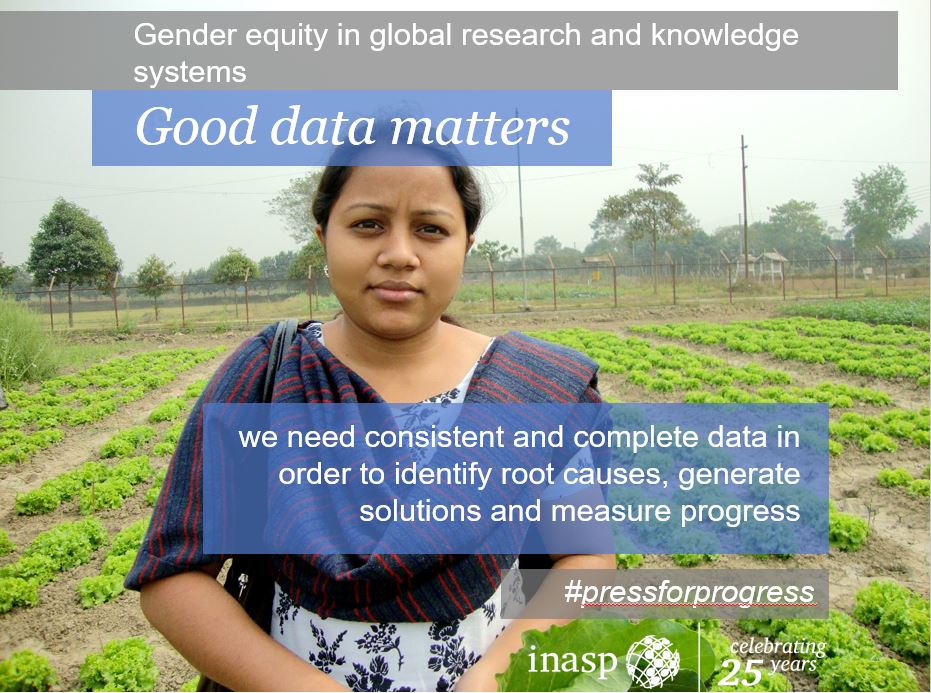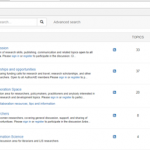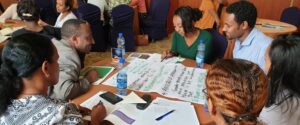
Gender data reveals trends and gaps in global research and knowledge
Building on our recent work in gender in higher education and to strengthen our knowledge of the global landscape for women, we recently commissioned a desk study of available data related to gender equality in higher education and research, digital literacy, research communications and publishing, and public policy. Jenny Birchall shares some of the themes that emerged.
In the Sustainable Development Goals, gender equality is a prominent target, as are education and governance. But to truly address the gender challenges and inequalities in these areas it is necessary to understand the situation today.
Many studies reveal under-representation of women in research and knowledge systems globally and this can be a particular issue in the Global South. However, they also reveal progress and significant data gaps. It is also important to understand the data in context. This post looks at some key themes that emerge from recent data studies.
Celebrating achievements
Significant progress has been made in some areas of gender equity, both worldwide and in countries in the Global South. According to World Economic Forum data, globally women make up 59% of those working in all types of education. While a gap remains in terms of seniority – only 41% of women in education are in leadership positions – this data reveals that the education–specific gender gap could be reduced to parity within the next 13 years, showing much better progress than in the economic and health sectors.
In research, the number of women authors of published research articles has increased over time, although it has still not reached close to parity and there are wide variations between fields. The proportions of women in editor and reviewer positions have also increased. A study of the scientific journal Functional Ecology, for example, found that women made up 17.6% of editors in 2004, and 27.3% in 2012. The figures for women reviewers were 18.3% in 2004 and 27.9% in 2012.
Globally, women have less access to ICT. The Broadband Commission estimated in 2013 that, globally, 41% of men and 37% of women have access to the internet. However, when it comes to online learning, courses see higher take up for women than for men. For example, a survey of 1,500 online students in the US found that in 2016 69% of online undergraduate students and 66% of graduate students were female.
In politics, policy and decision making, women are underrepresented but the numbers are slowly increasing. In 2016, 22.8% of all national parliamentarians were women. This shows a significant growth compared with 11.3% in 1995 but is still a long way from balanced.
Clear data gaps
The figures discussed so far are largely global. There are few sources of nationally comparable data on higher education, research and academic publishing that is disaggregated by gender. While comprehensive studies have been done in EU countries and some robust data is available for OECD countries, this is not the case for low- and middle-income countries. Data is better in some areas than others. For example, while we can quite easily find estimates on how many women are enrolling in higher education and in which subjects, it is much harder to find out how many of these women complete their studies and go on to find employment in their chosen field.
This lack of data on the gender dimensions of higher education and research is part of a broader issue of gaps in the collection and analysis of gender data. A range of global indicators have been developed in order to measure progress towards the Sustainable Development Goals. However, UN Women notes that 80% of the indicators for gender equality across the SDGs lack data, and only 13% of governments worldwide dedicate a budget to gender statistics.
Context is important
In considering individual countries and making national comparisons, it is important to note that even if a country is doing well according to one indicator, this doesn’t necessarily mean broad progress on gender equality or other aspects of development. For example, in Sri Lanka, women make up 43% of female academics, but only 5.7% of MPs are women. Rwanda has the highest number of women parliamentarians in the world (61.3%) in the world but it has a low score in the Open Budget Index, a measure of budgetary transparency.
It is also important to consider the range of gender-related reasons behind what the data is showing. For example, the lower numbers of female journal authors, editors and reviewers may in part be attributed to overt discrimination and bias in the system. However other factors, such as the barriers to career progress posed by women’s over-representation in caring, the higher likelihood of women working part time, and working cultures based on traditional male models, may also be contributing factors.
And there are likely to be factors related to particular research fields too. A study of 938,301 scientific papers hosted on the arXiv site between 1991 and 2013 found that just under 15% of articles were authored by a woman. This is a greater gender gap than that seen on the JSTOR digital archive, where a different study found that women represented 21.9% of gender-identified authorships in the entire network dataset.
However, while JSTOR’s subject areas span sciences and humanities, arXiv has a subject focus on physics, maths and computer science where there is well known to be a high gender gap, as demonstrated by other data (for example, overall, women represented 43% of teaching academics in the arts and humanities and 38.5% in the social sciences, 19% in the physical sciences and 15.6% in engineering and technology, according to Thomson Reuters and Times Higher Education, 2013).
Seeking to understand context is a key part of INASP’s approach to gender work and this data – and its gaps – will be used to inform future work.

 Previous Post
Previous Post Next Post
Next Post



Happy women’s day ! I thought thete was one great gift you can give to every woman in your life at this day –
Bonita’s book ! Support her. Follow this little African girl who published at the age of 10 and is still growing strong evey day!
Visit her at:
https://www.amazon.com/Bonita-Treasure-Murungi-Arinaitwe/e/B017C6B3LY
I